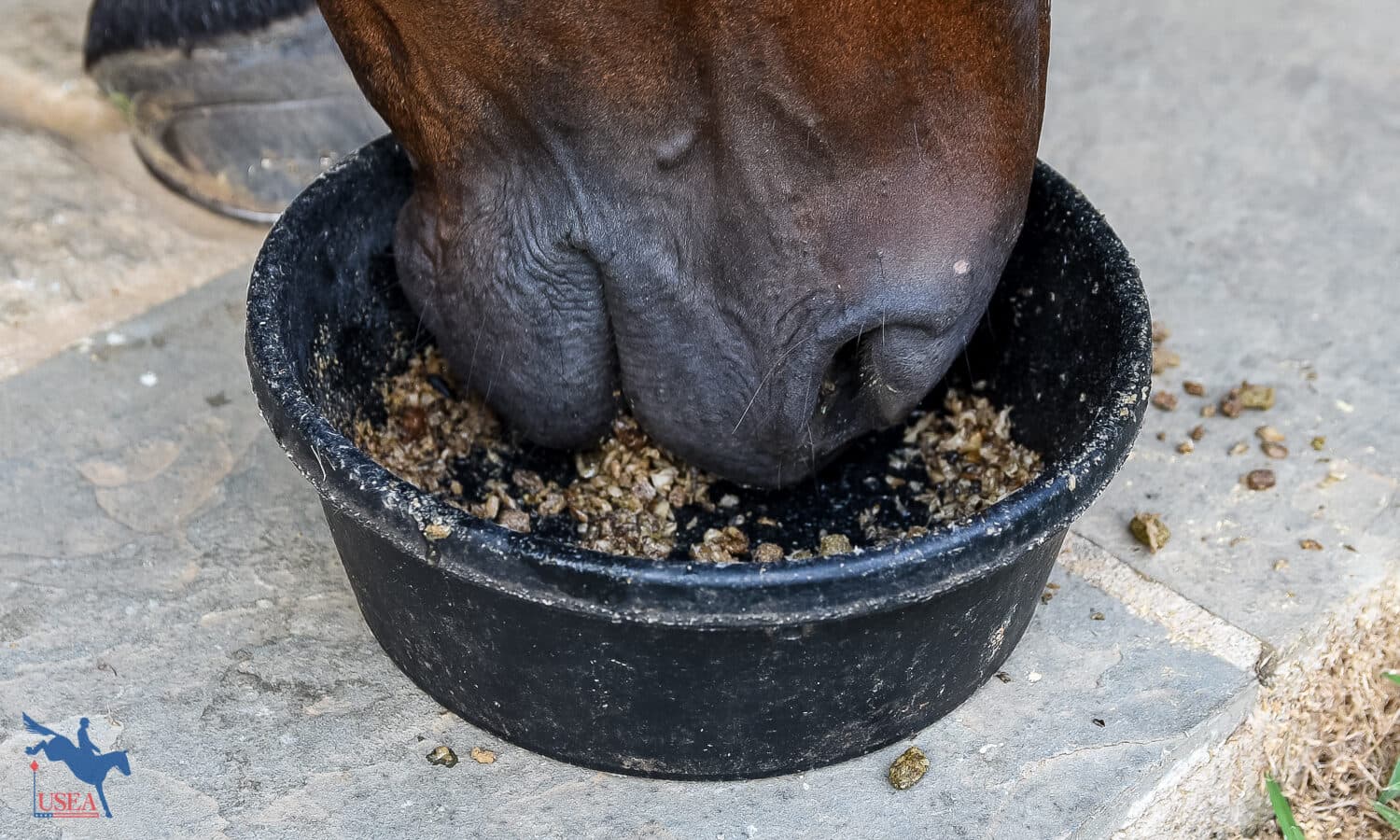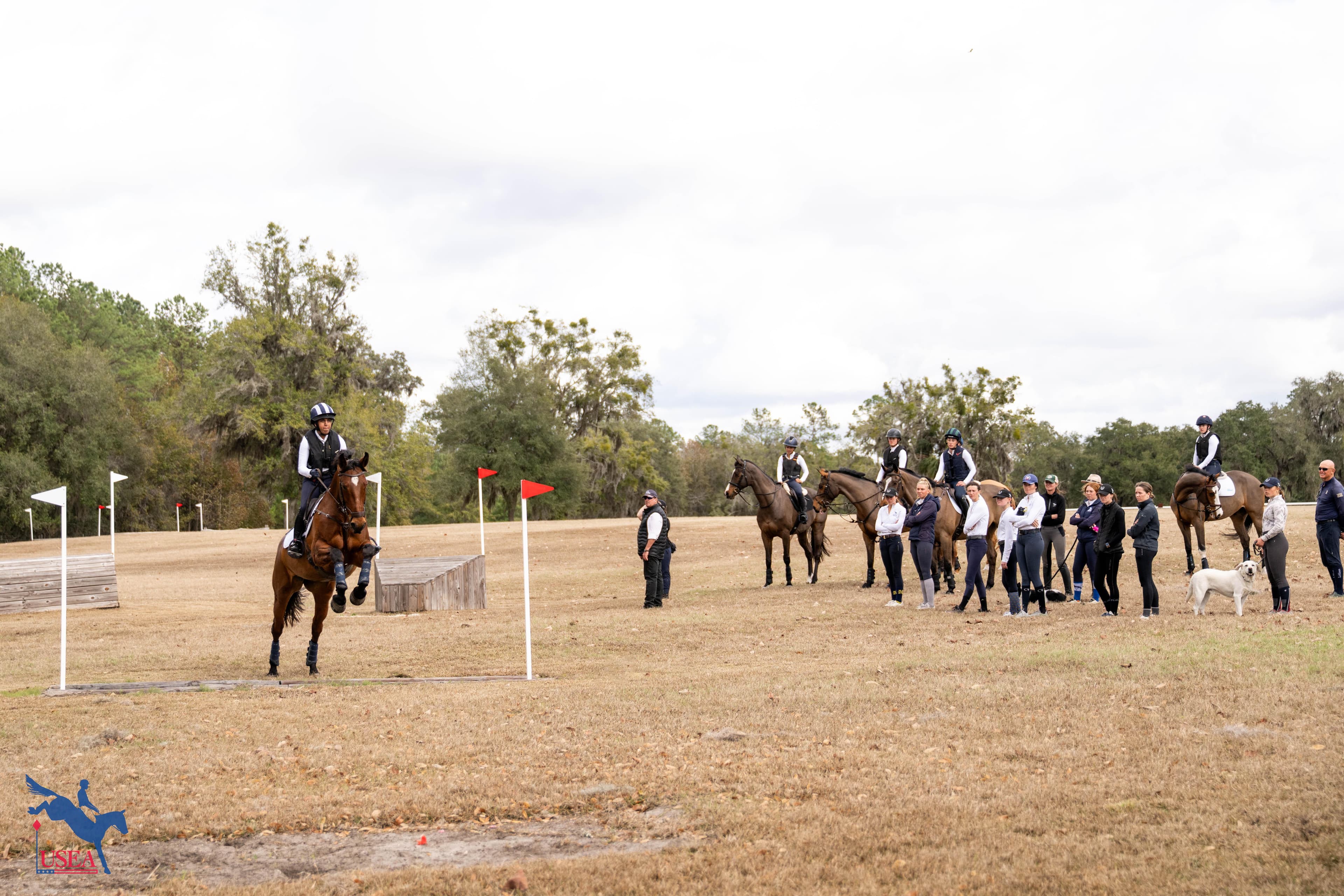The Scoop on Oral Joint Supplements

In this third and final installment of our series on joint supplements, Dr. Maureen Kelleher, clinical assistant professor of sports medicine and surgery at Virginia Tech's Marion duPont Scott Equine Medical Center (EMC) in Leesburg, Virginia, examines the different kinds of oral joint supplements and important considerations when selecting the joint supplement that’s right for you and your horse. Click here to read part one, which covers joint anatomy, and click here to read part two, which covers IV and IM systemic joint products.
“We need to back up and look at the gut,” said Dr. Maureen Kelleher before diving into an explanation of the many different oral joint supplements on the market. “Digestion begins in the mouth. Salivary secretion starts to break things down as the horse chews things up and then swallows, and it ends up in the stomach. We’ve got more digestion occurring in the stomach and the small intestine, and absorption starts to occur in the small intestine and continues in the large intestine.”
“Digestion means taking large food particles and breaking them down by chewing them or by enzymatic destruction into small particles – carbohydrates, proteins, fats, minerals, vitamins, etc.,” Kelleher elaborated. “The products of digestion cannot go anywhere without absorption, which is basically taking those things and passing them across the gastrointestinal surface and landing them in the blood supply.” The key to all this, explained Kelleher, is the concept of bioavailability, or what fraction of what has been absorbed and makes it into the bloodstream is actually usable by the rest of the cells in the body.
“A lot can happen during the digestive process,” Kelleher noted. “Horses do not have the most efficient system on the planet, so to get from the mouth to the joint, there are a lot of things that have to go right.”
There are four main types of oral joint supplements: hyaluronic acid, glucosamine, chondroitin sulfate (CS), and methylsulfonylmethane (MSM), each of which has a slightly different mechanism of action within the joint. Hyaluronic acid, like in its intravenous form, encourages the production of hyaluronan within the synovial membrane and improves joint lubrication.
Glucosamine and chondroitin sulfate are typically given together. “Glucosamine is an amino acid, so by feeding glucosamine, which is used in the production of glycosaminoglycans (GAGs), we would be giving our horse the base materials to make sure he has what he needs to produce GAGs in the joint,” Kelleher explained. “Similarly, chondroitin sulfate is one of the matrix subunits of GAGs, so by giving chondroitin sulfate, we’re giving the horse the raw materials he needs to improve joint health.”
“MSM is a bit of a wild card,” Kelleher continued. “MSM is a derivative of dimethyl sulfoxide (DMSO) – it’s a product we use a lot in veterinary medicine. We use it because it’s a very potent antioxidant. The benefit of feeding a supplement with MSM is that there would be a reduction in joint inflammation due to its antioxidant effect.”
Besides the “four big ones,” there are a plethora of other joint supplement options that range from fatty acids, including cetyl myristroleate and omega-3s to resveratrol, collagen peptides, and herbal remedies. However, none of these supplements has any significant scientific research to back up their efficacy.
Safety, Bioavailability, Efficacy, and Cost
“With any oral supplements that you feed your horse, safety, bioavailability, efficacy, and cost are the four things you really need to consider when deciding whether to give your horse a supplement or not and, if you decide to give him a supplement, how you’re going to choose it.”
Kelleher stressed the importance of “safety first” when selecting a supplement, as only a few on the market are backed by any sort of scientific research, and there is no regulatory process in place for bringing an equine supplement to market. “How do you know if what companies claim on the package is actually what’s in the package, and how do you know that the active ingredient in the package is the correct amount needed to have an effect? There’s no pre-approval before reaching the market, there’s no need to prove efficacy or safety to the horse, and there’s no need to prove that what you claim is on the bag is in the bag.”
The National Animal Supplement Council (NASC) is a self-regulatory organization of supplement companies that came together to create standards within the industry for quantity and quality. “In order to display the council’s seal on your package, you have to adhere to the guidelines of the council, and you also have to allow your products to be independently verified,” Kelleher said. “If you see the council’s symbol on the supplement, then you know at least they’re trying to standardize the product, and you know they’ve been subject to an independent audit.” The NASC website has a list of supplements that have been independently tested and approved.
As demonstrated by Kelleher’s description of an oral supplement’s path through the body, it can be difficult to ensure that what you’re feeding gets where it is intended to go. “Even if the supplement is correct in the bag, is it going to get into their gut, and is it going to get past their gut and will it be bioavailable?” She cited a study that stated that glucosamine, for example, is only 2.5 percent bioavailable in the body and that in order to detect the glucosamine, it had to be fed at 5 to 10 times the typical dosage. With limited research into the bioavailability of supplements in the horse’s body, it can be difficult to depend on a supplement to reach sufficient levels to have an effect.
Kelleher posed the question, “What is our goal with any oral supplementation?” Typically, the horse is displaying some sort of symptom – in the case of joint supplements, the symptom would be stiffness or lameness caused by osteoarthritis – and the goal of supplementation is to alleviate the symptom. Efficacy, therefore, can be determined by whether or not the symptom improves when treated.
Ultimately, a cost-benefit analysis can be a great tool for determining which supplement to choose – be it oral or systemic – and evaluating the safety, bioavailability, and efficacy can be helpful in making a determination about which option is right for your horse.
For Kelleher, the distinct advantage of systemic joint products over oral supplements of any kind is that the question of whether or not the supplement makes it into the horse is completely erased. “I’m not worried about whether he ate it, I’m not worried about whether he absorbed it, I’m not worried about whether or not it was bioavailable – it goes straight into the vein or the muscle.”
About Dr. Maureen Kelleher
Dr. Maureen Kelleher earned her Doctor of Veterinary Medicine at the University of California, Davis, in 2006. She then completed an internship at Pioneer Equine Hospital in Oakdale, California, and a residency in equine surgery at University of California, Davis. Before joining EMC, Dr. Kelleher gained years of experience in equine private practice in California with a focus on equine sports medicine and lameness, advanced diagnostic imaging, and acupuncture. She became a certified veterinary acupuncturist in 2010, and earned Diplomate status with the American College of Veterinary Surgeons in 2013. Dr. Kelleher focuses on the assessment and non-surgical treatment of performance-limiting problems in sport horses. She works closely with EMC’s therapeutic farrier team and its medicine and surgery teams, utilizing advanced diagnostic imaging capabilities to provide equine patients with superior care.














